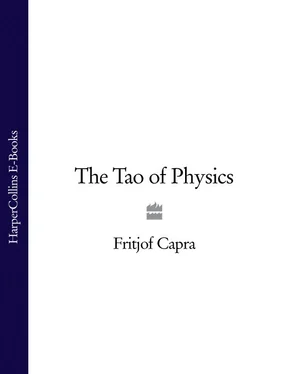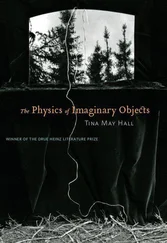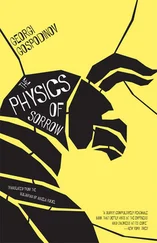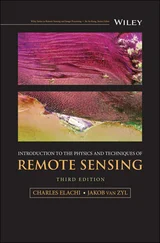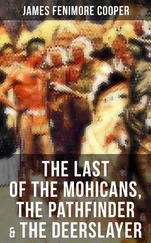1 ...7 8 9 11 12 13 ...19 Chinese and Japanese mystics have found a different way of dealing with the language problem. Instead of making the paradoxical nature of reality palatable through the symbols and images of myth, they prefer very often to accentuate it by using factual language. Thus Taoists made frequent use of paradoxes in order to expose the inconsistencies arising from verbal communication and to show its limits. They have passed this technique on to Chinese and Japanese Buddhists who have developed it further. It has reached its extreme in Zen Buddhism with the so-called koans , those nonsensical riddles which are used by many Zen masters to transmit the teachings. These koans establish an important parallel to modern physics which will be taken up in the next chapter.
In Japan, there exists yet another mode of expressing philosophical views which should be mentioned. It is a special form of extremely concise poetry which is often used by Zen masters to point directly at the ‘suchness’ of reality. When a monk asked Fuketsu Ensho, When speech and silence are both inadmissible, how can one pass without error?’ the master replied:
I always remember Kiangsu in March—
The cry of the partridge,
The mass of fragrant flowers. 18
This form of spiritual poetry has reached its perfection in the haiku , a classical Japanese verse of just seventeen syllables, which was deeply influenced by Zen. The insight into the very nature of Life reached by these haiku poets comes across even in the English translation:
Leaves falling
Lie on one another;
The rain beats the rain. 19
Whenever the Eastern mystics express their knowledge in words—be it with the help of myths, symbols, poetic images or paradoxical statements—they are well aware of the limitations imposed by language and ‘linear’ thinking. Modern physics has come to take exactly the same attitude with regard to its verbal models and theories. They, too, are only approximate and necessarily inaccurate. They are the counterparts of the Eastern myths, symbols and poetic images, and it is at this level that I shall draw the parallels. The same idea about matter is conveyed, for example, to the Hindu by the cosmic dance of the god Shiva as to the physicist by certain aspects of quantum field theory. Both the dancing god and the physical theory are creations of the mind: models to describe their authors’ intuition of reality.
Chapter 3 Beyond Language
The contradiction so puzzling to the ordinary way of thinking comes from the fact that we have to use language to communicate our inner experience which in its very nature transcends linguistics.
D. T. Suzuki
The problems of language here are really serious. We wish to speak in some way about the structure of the atoms … But we cannot speak about atoms in ordinary language.
W. Heisenberg
The notion that all scientific models and theories are approximate and that their verbal interpretations always suffer from the inaccuracy of our language was already commonly accepted by scientists at the beginning of this century, when a new and completely unexpected development took place. The study of the world of atoms forced physicists to realize that our common language is not only inaccurate, but totally inadequate to describe the atomic and subatomic reality. Quantum theory and relativity theory, the two bases of modern physics, have made it clear that this reality transcends classical logic and that we cannot talk about it in ordinary language. Thus Heisenberg writes:
The most difficult problem … concerning the use of the language arises in quantum theory. Here we have at first no simple guide for correlating the mathematical symbols with concepts of ordinary language; and the only thing we know from the start is the fact that our common concepts cannot be applied to the structure of the atoms. 1
From a philosophical point of view, this has certainly been the most interesting development in modern physics, and here lies one of the roots of its relation to Eastern philosophy. In the schools of Western philosophy, logic and reasoning have always been the main tools used to formulate philosophical ideas and this is true, according to Bertrand Russell, even of religious philosophies. In Eastern mysticism, on the other hand, it has always been realized that reality transcends ordinary language, and the sages of the East were not afraid to go beyond logic and common concepts. This is the main reason, I think, why their models of reality constitute a more appropriate philosophical background to modern physics than the models of Western philosophy.
The problem of language encountered by the Eastern mystic is exactly the same as the problem the modern physicist faces. In the two passages quoted at the beginning of this chapter, D. T. Suzuki speaks about Buddhism 2 and Werner Heisenberg speaks about atomic physics, 3 and yet the two passages are almost identical. Both the physicist and the mystic want to communicate their knowledge, and when they do so with words their statements are paradoxical and full of logical contradictions. These paradoxes are characteristic of all mysticism, from Heraclitus to Don Juan, and since the beginning of this century they are also characteristic of physics.
In atomic physics, many of the paradoxical situations are connected with the dual nature of light or—more generally—of electromagnetic radiation. On the one hand, it is clear that this radiation must consist of waves because it produces the well-known interference phenomena associated with waves: when there are two sources of light, the intensity of the light to be found at some other place will not necessarily be just the sum of that which comes from the two sources, but may be more or less. This can easily be explained by the interference of the waves emanating from the two sources: in those places where two crests coincide we shall have more light than the sum of the two; where a crest and a trough coincide we shall have less. The precise amount of interference can easily be calculated. Interference phenomena of this kind can be observed whenever one deals with electromagnetic radiation, and force us to conclude that this radiation consists of waves.
On the other hand, electromagnetic radiation also produces the so-called photoelectric effect: when ultraviolet light is shone on the surface of some metals it can ‘kick out’ electrons from the surface of the metal, and therefore it must consist of moving particles. A similar situation occurs in the ‘scattering’ experiments of X-rays. These experiments can only be interpreted correctly if they are described as collisions of ‘light particles’ with electrons. And yet, they show the interference patterns characteristic of waves. The question which puzzled physicists so much in the early stages of atomic theory was how electromagnetic radiation could simultaneously consist of particles (i.e. of entities confined to a very small volume) and of waves, which are spread out over a large area of space. Neither language nor imagination could deal with this kind of reality very well.
Eastern mysticism has developed several different ways of dealing with the paradoxical aspects of reality. Whereas they are bypassed in Hinduism through the use of mythical language, Buddhism and Taoism tend to emphasize the paradoxes rather than conceal them. The main Taoist scripture, Lao Tzu’s Tao Te Ching , is written in an extremely puzzling, seemingly illogical style. It is full of intriguing contradictions and its compact, powerful, and extremely poetic language is meant to arrest the reader’s mind and throw it off its familiar tracks of logical reasoning.
Chinese and Japanese Buddhists have adopted this Taoist technique of communicating the mystical experience by simply exposing its paradoxical character. When the Zen master Daito saw the Emperor Godaigo, who was a student of Zen, the master said:
Читать дальше
